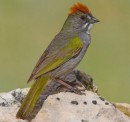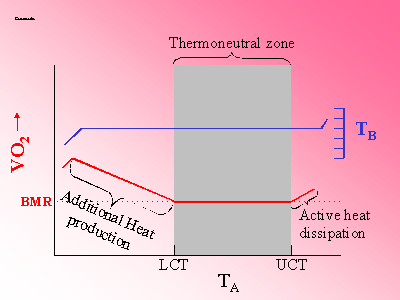 The minimum, or basal, metabolic rate (BMR) for a bird usually occurs when it rests at night and it reaches a maximum during flight. Almost all birds have high basal metabolic rates, and passerine birds have rates 50-60% higher than nonpasserines of the same body size.
The minimum, or basal, metabolic rate (BMR) for a bird usually occurs when it rests at night and it reaches a maximum during flight. Almost all birds have high basal metabolic rates, and passerine birds have rates 50-60% higher than nonpasserines of the same body size.Basal metabolic rate is related to the size of the animal such that the rate per gram of mass decreases with size. Larger birds use more energy, but they use energy at a lower rate per gram of mass.
| Trumpeter Swan | ||
| Brown Pelican | ||
| Common Raven | ||
| American Kestrel | ||
| White-crowned Sparrow | ||
| House Wren | ||
| Rufous Hummingbird | ||
In the thermoneutral zone, metabolism and the amount of oxygen used do not change with changing ambient temperature. Metabolism increases below the lower critical temperature (LCT), primarily as a result of shivering heat production. Metabolism increases above the upper critical temperature (UCT) from active loss of heat through panting and evaporative cooling, as well as the direct effects of higher temperatures on cellular functions.

Avian Energy Balance & Thermoregulation
Gill, Frank B. 1995. Ornithology. Second Edition. W. H. Freeman and Company, NY.